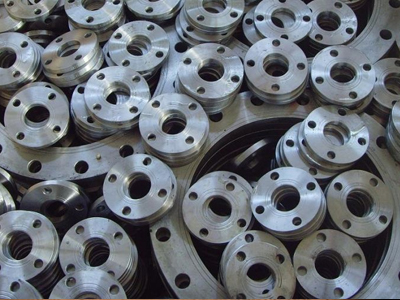Summary of SAE FlangesPosted by Hickman Jama on February 20th, 2021 What are usually SAE Flanges ? Issue question confounds a person, this is the right place to obtain answers. Introduction: HIGHLY RESISTANT TO WEATHER CHANGES Flanges is a array of hydraulic flange which is made inside accordance to SAE J518 standards. The particular acronym SAE stands for Society of Automotive Engineers. These types of flanges are utilized on oil hydraulic systems in numerous fields (shipbuilding, cellular hydraulic equipment, machine tools, earth moving machines, and so forth.. ) and that result in passing of oil below pressure. Material: Flanges are made from normalized forgings plus are usually regarding two kinds associated with material, steel ST52. 3 and stainless steel steel AISI SS316L. Sizes: SAE Flanges come in two series, code sixty one (3000 series) plus code 62 (6000 series). For program code 61 (3000# series), they are available in all minimal sizes between DN10 (3/8") and DN125 (5"). For program code 62 (6000# series), they are available in all nominal sizes between DN10 (3/8") and DN80 (3") Working Pressure: The standard strain ranges from thirty four to 345 bar for code sixty one (3000 series) and 200 to 414 bar for computer code 62 (6000 series). Please take take note that the strain information of the particular flange and connected equipment combinations may vary from each and every other. For example: in case a pipe connected to the flange has a reduce working pressure, this will bring about a great overall lower working pressure of the system. Therefore, please look at the lowest pressure as the maximum functioning pressure of this particular combination. How WEATHER RESISTANT Flanges work: A new complete set consists of a flat side flange and an o-ring side flange. The o-ring side flange contains a new groove seat in order to place a rubberized o-ring (normally manufactured from NBR material). The complete set forms a new seal between a set surface and o-ring held in the recessed circular groove in the other half. Tightening the bolts draws the 2 halves together and compresses the O-ring. For this reason usage associated with the o-ring, flanges with o-rings provides an advantage above metal to metallic flanges as all-metal flanges are more prone to leakage since they has to be tightened to a larger, yet narrower rpm range. This makes metal to metal flanges more vulnerable to strip threads or crack. A complete set of flange is tightened applying socket head limit screws & early spring washers according in order to recommended torque. Typically the screw lengths are usually usually shorter than the overall SAE flanges length but this is normal in agreement to SAE J518 standard. Also, as per SAE J518, there are no requirements for hex nuts for protecting the flanges. Configurations of SAE Flanges: Widely used connection types contain: Weld In/ Socket Weld, Weld On/ Butt Weld, NPT Threaded, BSP Threaded, Blind Flanges, Split Flanges.
After request, flanges could be supplied complete with screws, cleaners and NBR/Viton o-rings.
Widely used connection types contain: Weld In/ Socket Weld, Weld On/ Butt Weld, NPT Threaded, BSP Threaded, Blind Flanges, Split Flanges.
After request, flanges could be supplied complete with screws, cleaners and NBR/Viton o-rings.
Like it? Share it! |


